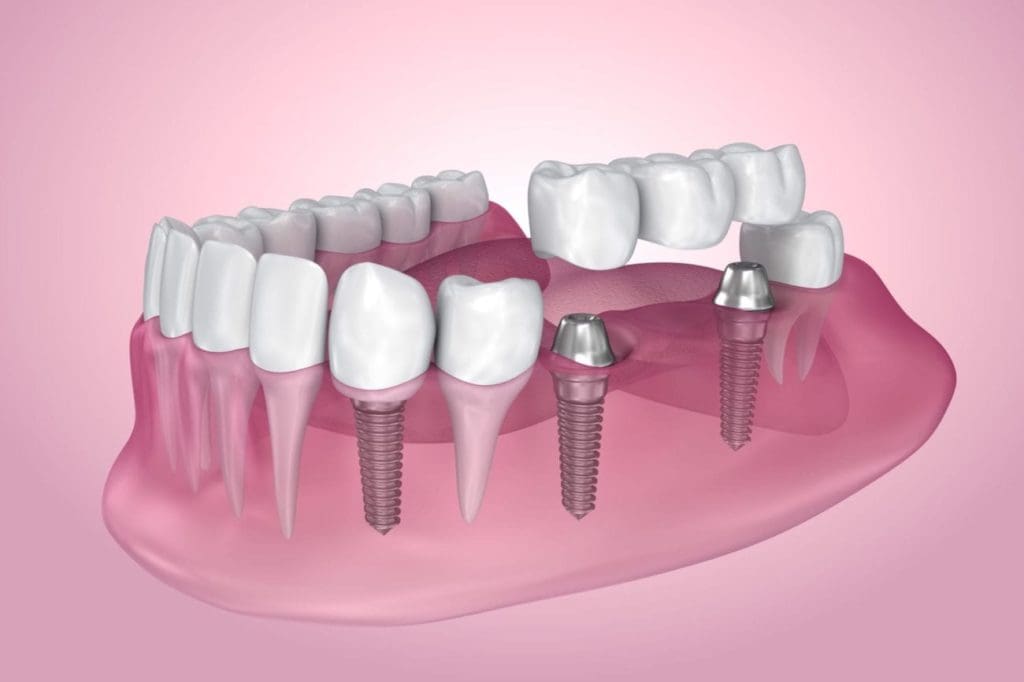You may benefit from a dental bridge if you are missing one or more teeth. Dental bridges can be removable, fixed, or secured with dental implants for a more permanent restoration. Dr. Ribitch, a skilled and respected restorative dentist in Mount Pleasant, MI, provides affordable dental bridges for restoring a healthy smile.

Removable and Fixed Dental Bridges
A dental bridge is a false tooth or span of teeth that replaces missing teeth. On each side, it connects to your adjacent teeth, abutment teeth, to ensure the bridge stays in place. This way, your other teeth don’t shift, and your bite stays even. Bridges can be removable or fixed.
Removable Dental Bridges
A removable bridge, also called a partial denture, can be removed from the mouth when it needs to be cleaned or when you’re sleeping. The base is metal or plastic, and clasps attach it to the abutment teeth on either side. Patients choose removable bridges because they’re the most affordable option. We also recommend that patients have them as a temporary restoration while waiting for a permanent one.
However, removable bridges can shift or move, making speaking or eating uncomfortable. They require specialized care because you must remove them from your mouth to clean them properly. This also means you can’t wear them all the time, as they can rub against your gums. The clasps that hold them can loosen over time, changing the fit of your bridge and making it harder to stay in its proper place.
Fixed Dental Bridges
A fixed dental bridge is a permanent solution that stays in your mouth. The abutment teeth on either end are filed down so dental crowns can go over them. The crowns take on the task of supporting the bridge. With a fixed bridge, it feels more like your normal teeth. It doesn’t move in your mouth, and you can eat and speak normally without worrying. If you take care of your bridge properly, it can last for many years.
Fixed bridges do require the loss of tooth structure. The teeth under the supporting crowns can wear down over time. You must also ensure you’re diligent about oral hygiene with fixed bridges. Food and bacteria can get stuck under the bridge, leading to gum disease or tooth decay in your supportive teeth.
Implant-Secured Dental Bridges
Dr. Raymond Ribitch works with an oral surgeon to place dental implants for implant-secured dental bridges. Instead of your teeth supporting the bridge, it’s dental implants. They’re placed in your jawbone, which integrates with the bone structure. This replaces the tooth root, providing unmatched stability and function. Implant-secured bridges aren’t removable and function the most like your normal teeth.
One of the biggest benefits of dental implants is that they promote jawbone growth. Once you lose your tooth roots, the jawbone starts deteriorating. Inserting implants in the jawbone stops the deterioration and stimulates bone growth. With other bridges, the jawbone changes can mess with how the bridge fits. You may need to get multiple adjustments or replacements to ensure that the bridge stays functional.
With implant-supported bridges, you don’t have to worry about your bridge slipping or moving when you eat or speak. You don’t have to change your diet because you can’t break down certain foods with your bridge. They’re easy to take care of because you follow your normal oral healthcare routine.
Dental Bridges: What to Expect
Fixed dental bridges can be completely installed in just two visits. A local anesthetic will be administered, and your abutment teeth will have their enamel prepared for crowns to be placed. Molds of the abutment teeth will be made to allow for the creation of three-dimensional computer models that will be used to create the crowns. During this first visit, a temporary bridge will be installed so that you can eat and speak as you’re accustomed to until your permanent bridge is constructed.
Once your permanent bridge is ready, you must return for a second visit to have it placed. It will take some time for you to become accustomed to the feel of the new bridge against your tongue, lips, and cheeks, but eventually, you will accept it as part of your teeth.
Dental Bridges FAQs
Dental bridges are a versatile solution for replacing missing teeth. Learn more information below.
How do you care for a dental bridge?
A removable dental bridge should be removed and cleaned twice a day. When secured with dental implants, dental bridges can be maintained like regular natural teeth. Crowned teeth need the same routine care as your other teeth.
Be sure to brush twice daily and floss around and under a fixed dental bridge daily to control plaque build-up. If you have a bridge, scheduling routine cleanings with your dental office is even more important. A dental bridge that is properly cared for can last for a long time.
How long is the dental bridge procedure?
The dental bridge procedure usually takes an hour to an hour and a half over two office visits. For implant-supported bridges, the dental implant procedure will need to be performed first. The implants require 3-6 months of healing to fuse with the jawbone. After that, we can take impressions and get you fitted for the bridge.
Is the dental bridge procedure painful?
No, you shouldn’t experience pain during the bridge procedure. We completely numb the area with a local anesthetic to ensure you’re comfortable.
How long does it take a dental bridge to settle?
Even with an implant-supported bridge that feels the most like your natural teeth, it’s still a foreign object in your mouth. It takes some time for you to get used to it. It may feel odd in your mouth for about two weeks as you adjust. After that, it begins to feel natural.
How long should I wait to eat after getting a dental bridge?
Wait about an hour after we place your permanent dental bridge to eat. This is to give time for the cement to settle and ensure stability. Avoid hard or sticky foods for the first few days of eating, as they’re more likely to damage the restoration.
Can food get stuck under my dental bridge?
It can, which is why proper oral care is so important. We’ll show you techniques for brushing and flossing over and around your dental bridge so that all areas are clean. We also recommend looking into tools like Waterpiks, which provide an easy way to deep-clean hard-to-reach areas in your mouth.
Am I a good candidate for a dental bridge?
We perform a full evaluation to ensure a bridge is your right choice. For a traditional bridge, you have to have strong, healthy teeth on each side of the bridge span. If they’re weakened in any way or have cavities or decay, they can’t serve as anchor teeth for the bridge. For an implant-supported bridge, you ned enough healthy bone structure to fuse with the implant posts. You should also be in overall good oral health.
Schedule an Appointment Today
If you have multiple missing teeth, restore them with dental bridges today. Mid Michigan Smiles is your destination for complete restorative dentistry services. To schedule an appointment, call Dr. Ribitch and his team at 989-772-1344. We will work with you every step of the way to ensure your comfort during treatment.
